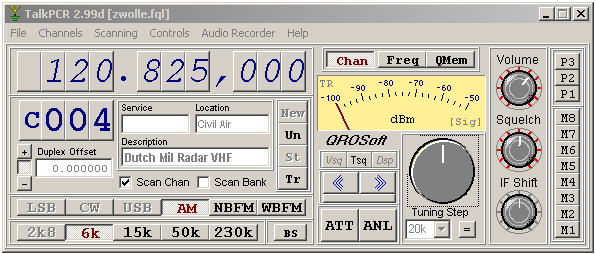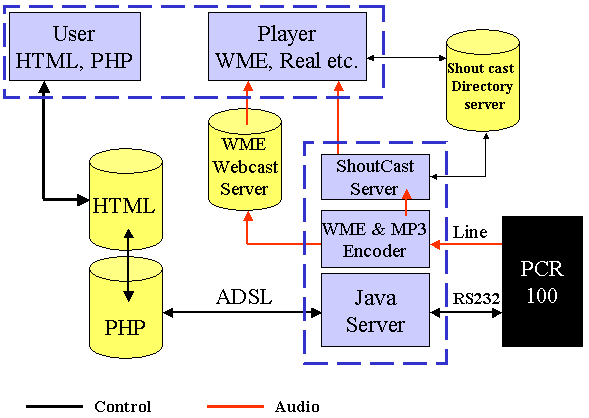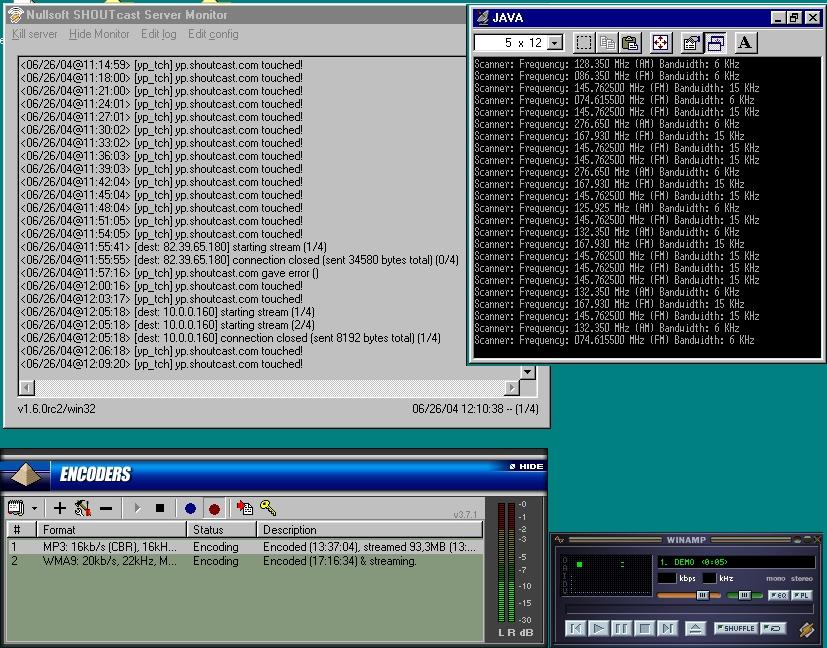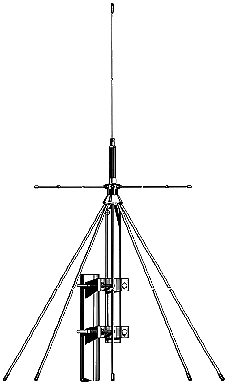PCR100 On-line receiver, how does it work. (klik hier voor Nederlandse tekst)
 |
Hardware
The Icom PCR100 wideband receiver can only be controlled by computer.
It’s capable frequency range covers 10 KHz to 1300 MHz. Click here for the commercial leaflet.
AM and FM modulated signals can be received and the PCR100 has 4 different bandwitdh (6, 15, 50 en 230 KHz).
Software
The PCR100 is controllable using the supplied software. Fortunatly, other software has been made for this receiver (and his bigger brother the PCR1000) over time, which is even more user friendly and include extra handy features. An example of this is TalkPCR. On the designer site TalkPCR software can be downloaded. There is even a Yahoo group.

The good thing of the PCR100 receiver is it’s easy way to control the receiver using the RS232 port of the PC. This makes it very easy to write some own software to use the receiver. A command summary of the PCR1000 (almost the same to the PCR100) can be found here.
On-line control
When controlling the receiver via the internet, a subset of all usable commands can be applied. The user / listener should easaly be able to tune the receiver. The only settings needed are frequency, mode and bandwitdh. Next to this, it’s also handy to get the values back in order to inform new listerners logging in to the receiver about the current settings.
We realised this type of control in Java. The direct controlling of the receiver resides on a P2/233Mhz laptop and the complete communication (RS232) interception and distribution of commands and controlling of the scanning mode is done using Java. We did not implement the use a Java Applet as client (user side) , but organised the user interface by means of PHP scripts. These scripts resides nicely on a public webserver and sensitive information such as ip adress and poortnumbers are hidden.
In a diagram it looks like this:

Audio
Audio can be distributed roughly in 2 ways.
1) Use a so-called Stream Server.
This gives the advantage that your own hardware and netwerk will not be overloaded. The listeners will logon to a public server.
2) All listeners will logon to your own computer. Usally this means a direct hit based on your IP adress en port. This makes you vulnerable and there is a limit to the number of listeners.
Next to this you have to decided in which format you want to stream. Stay within Windows Media with for instance and use a WMA codec or stream with an MP3 formats. The final choce is also dependent on the used Stream Server and will have an effect on the used player.
And there will be a difference in throughput. The speed will differ per format and is also influenced by the used bandwitdh. In our case we want ‘as fast as possible’, because wen you tune the receiver you would like to have the results fast and want to know if there is something the hear at the tuned frequency.
The at us implemented solution has both protocols. There is a WME stream, reachable via public Stream Server nl.: webcast.xs4all.nl (a slower but save solution) and a direct connectable MP3 stream. Therefor we have a local shoutcast server active which is made known to the public directory service of shoutcast.
If you are using a real player the stream delay is about 4 seconds! The WME solution, using the xs4all webcast, will induce about 20 seconds delay.
Server
The configuration on the server pc consists of the floowing components:
1) Java program controlling the PCR100
2) Winamp player V2.9.1
3) SAM encoder software (DSP add-on for Winamp 2) V3.7.1
4) Shoutcast Server V1.6.0rc2/win32
The laptop (IBM390 ThinkPad – P2/233) has a Windows 98(SE) operating system and overhead software has been kept to the minimal.
The server screen looks as follows:

The SAM encoder generated a MP3 as well as a WMA9 stream. The bandwidth is kept low resp. 16Kb/s and 20Kb/s. SAM encoders are products from Spacial Audio and you must register in order to have 24/7 use.
The Winamp player is an old version V2.9.1. You can download it from several sites. (just google)
Antenna
Last but not least,,, what’s a receiver without antenna. At 15 meters hight, a Sirio SD1300(N) Discone antenna has been placed. The antenna has a covarge from 50 till 1300 MHz, but lower frequencies will give reasonable results with this discone antenna.

